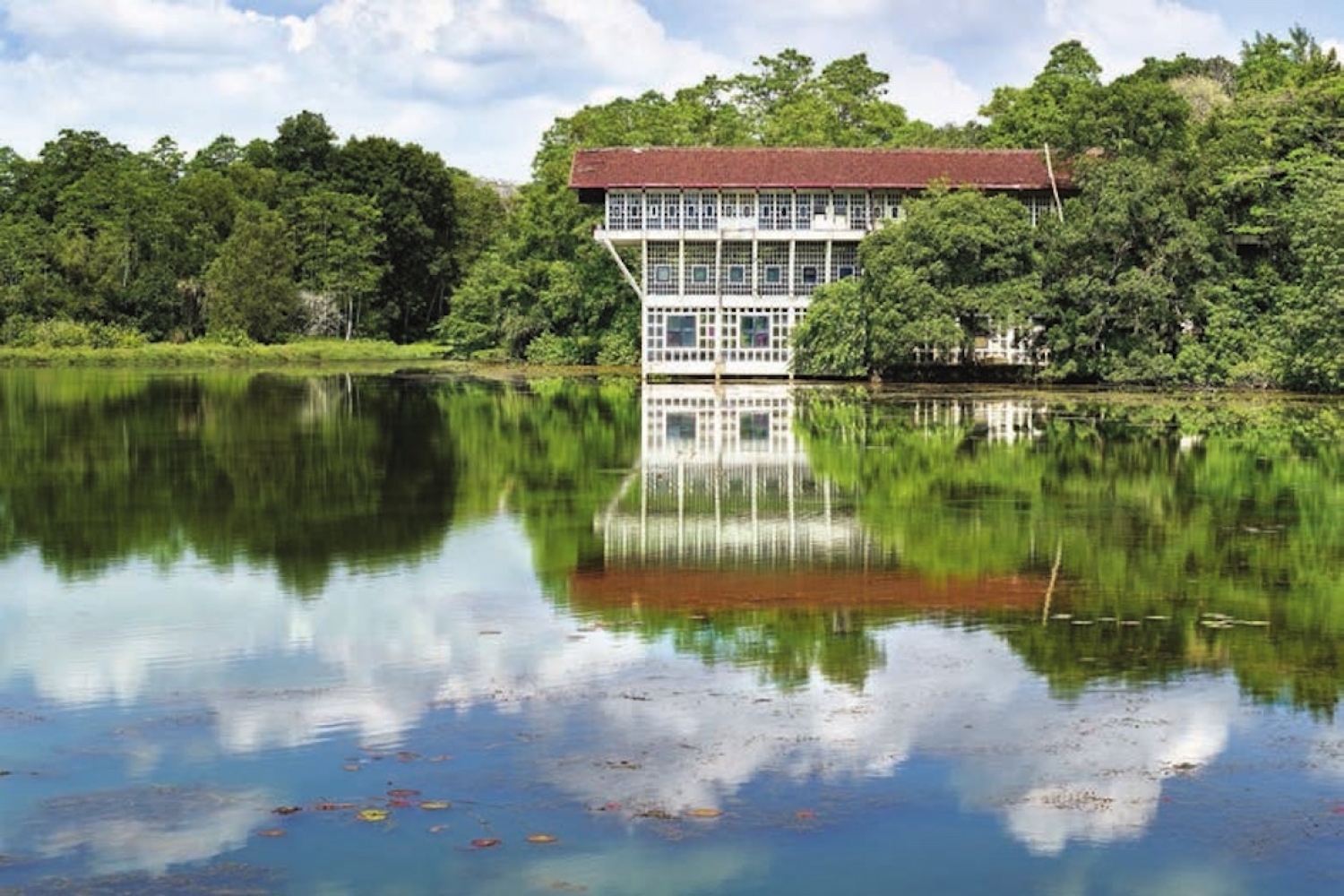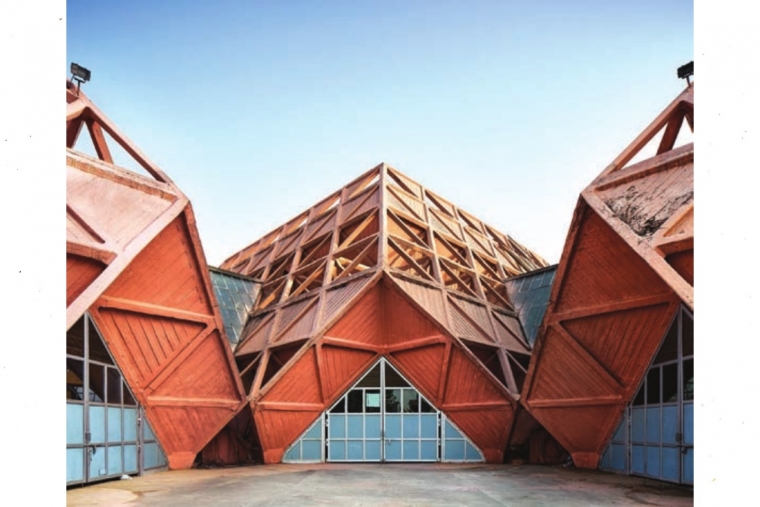
Geoffrey Bawa & Ulrik Plesner, Steel Corporation Offices, Oruwala, Sri Lanka

Geoffrey Bawa & Ulrik Plesner, Steel Corporation Offices, Oruwala, Sri Lanka
Photographer Randhir Singh’s substantial body of work reflects his focus on architecture and urbanism. From IIT Delhi: A Modernist Case Study (2020) to Yamuna River Project (2017), the Architectural Photographer has endeavoured to capture and catalogue architectural and industrial landscapes that are often overlooked through his exhibitions and projects. Currently, his portfolio of photographs on modern architecture in Bangladesh, India, Pakistan and Sri Lanka is being exhibited at the Museum of Modern Art in New York as a part of The Project of Independence: Architectures of Decolonization in South Asia, 1947- 1985.
Let’s start from the very beginning. When did your association with the camera begin?
I was fortunate to spend a college semester in Rome where I first started ‘making’ photographs seriously. The semester was devoted to studying architecture, which became the primary focus in my photography. Film was expensive, so I found myself working delib- erately, spending time on each composition and carefully considering the scene in frontof me before pressing the shutter.
When did you realise the kind of photographer you want to be?
I was working in New York at an architectural office when I learnt about a series of con- tinuing education classes offered by the International Centre of Photography (ICP). The classes were held once a week, after hours, with assignments for the following week. I took classes in portraiture, street photography, landscape and some theory classes but it was the class I took in large format photography that really caught my attention. Working with a 4x5 camera for the first time opened my eyes to a whole world of possibilities and it connected to the contemplative way of making photographs that I so enjoyed back in college. Photography became a way to connect with architecture and an excuse to roam around the city making photographs.
You studied architecture that extended to architectural photography – how does being an architect inform your photographer’s eye?
My education as an architect gives me a foundation to build on with my photographs. On one level, I understand how buildings are put together, how the building will change over the course of a day and what the architect was trying to achieve. But I have also developed an understanding of what my role is as a photographer of architecture and how my photographs contribute to architectural and photographic history.

Raj Rewal & Mahendra Raj, Hall of Industries, Pragati Maidan, New Delhi, India
You began your personal assignments while exploring your city that became home after being away for twenty years – how has Delhi been instrumental in your journey?
Moving to Delhi allowed me to quit my architectural job and focus completely on photography. And this city is a gold mine of photographic opportunities, especially when you move past the obvious. But perhaps the most important aspect is that Delhi has allowed me to work slowly and to spend time thinking about what I am doing. It’s hard to overstate the importance of working slowly.
Apart from photographing buildings, your subjects have also been a little unconventional and very intriguing – nallahs, water tanks, dargahs. As an artist what is it you like to communicate through your photographs?
One of my professors at ICP, in response to an uninspired photograph I made of a monument in NY, suggested that perhaps I try to find subject matter that hasn’t already been photographed. In Delhi and India in general, there is very little photography being made of the urban fabric, so these often overlooked elements became a way for me to make photographs while exploring and thinking about the city in a way that I had never done before. The Barapullah Project was about following a line (the nallah) through the landscape, the Water Towers were a collection of scattered points across the city and the Shrines seemed to hint at a totally different logic, which was at odds with the formal layout of the city.
Two years ago, you were also exhibiting alongside Madan Mahatta’s art – when you were approached for that collaboration – what were your initial thoughts to exhibit alongside an iconic artist and how did you treat that project to give it your own language?
The project was to photograph IIT Delhi for a publication and a two-person exhibition with Madan Mahatta’s work. While I was familiar with his work, I pointedly did not look at his photographs of IIT before working on my own. And while he photographed IIT, while it was brand new, I was looking at a sixty-year-old project. This dichotomy is clearly reflected in the photographs with Madan presenting IIT in pristine, heroic black and white while mine, in colour, reflecting an architecture that has aged and weathered.
You have also collaborated with Seher Shah, a fabulous artist, who is your wife as well. How did that collaboration happen and how were roles defined and what was the curatorial process?
Seher and I have been working together for many years on a wide range of projects. Our most in-depth collaboration has been with the recently completed Studies in Form which is currently being exhibited at the Kiran Nadar Museum of Art’s Noida space. We bring quite distinct perspectives to our projects and have evolved towards a healthy working relationship. I don’t think we set about defining roles but rather, allowed them to develop naturally through dialogue.
Currently you are showing at MOMA – can you tell us a little about that exhibit?
The Project of Independence: Architectures of Decolonization in South Asia, 1947 -1985 is an exhibition focussed on modern architecture built in Bangladesh, India, Pakistan and Sri Lanka. It is the first major exhibition to present a transnational survey of modern architecture in the region. My role was to produce a photo essay on a selection of seventy or so buildings, which required extensive travel and planning, made extremely difficult by the pandemic. The photographs are a reflection of contemporary life and free from the cliches (such as cows, camels and elephants) that are often associated with the sub-continent. I hope that these photographs inspire more study, documentation and protection for the amazing heritage of modern architecture that we have all around us.
This article is an all exclusive from our May Bookazine. To read more such articles, grab your copy here.
Text Shruti Kapur Malhotra
Date 11-06-2022